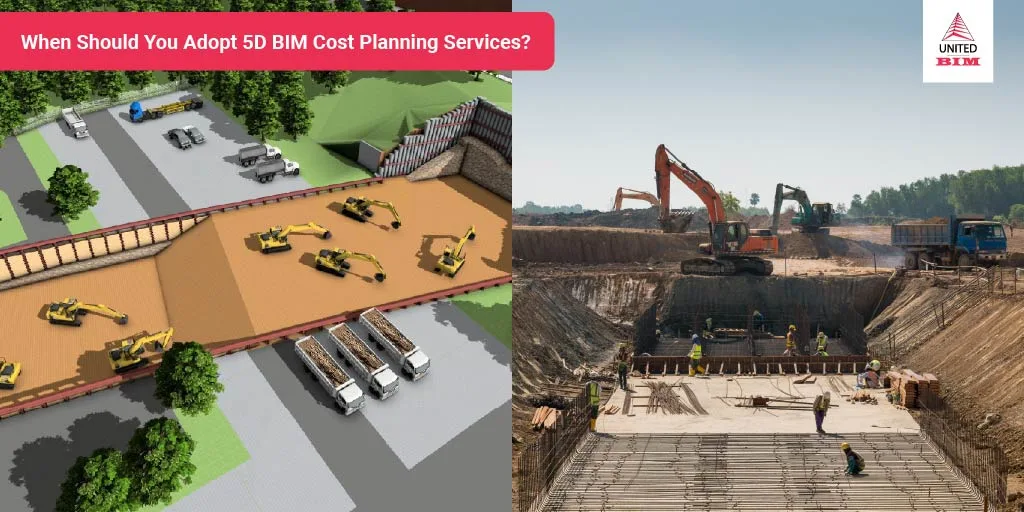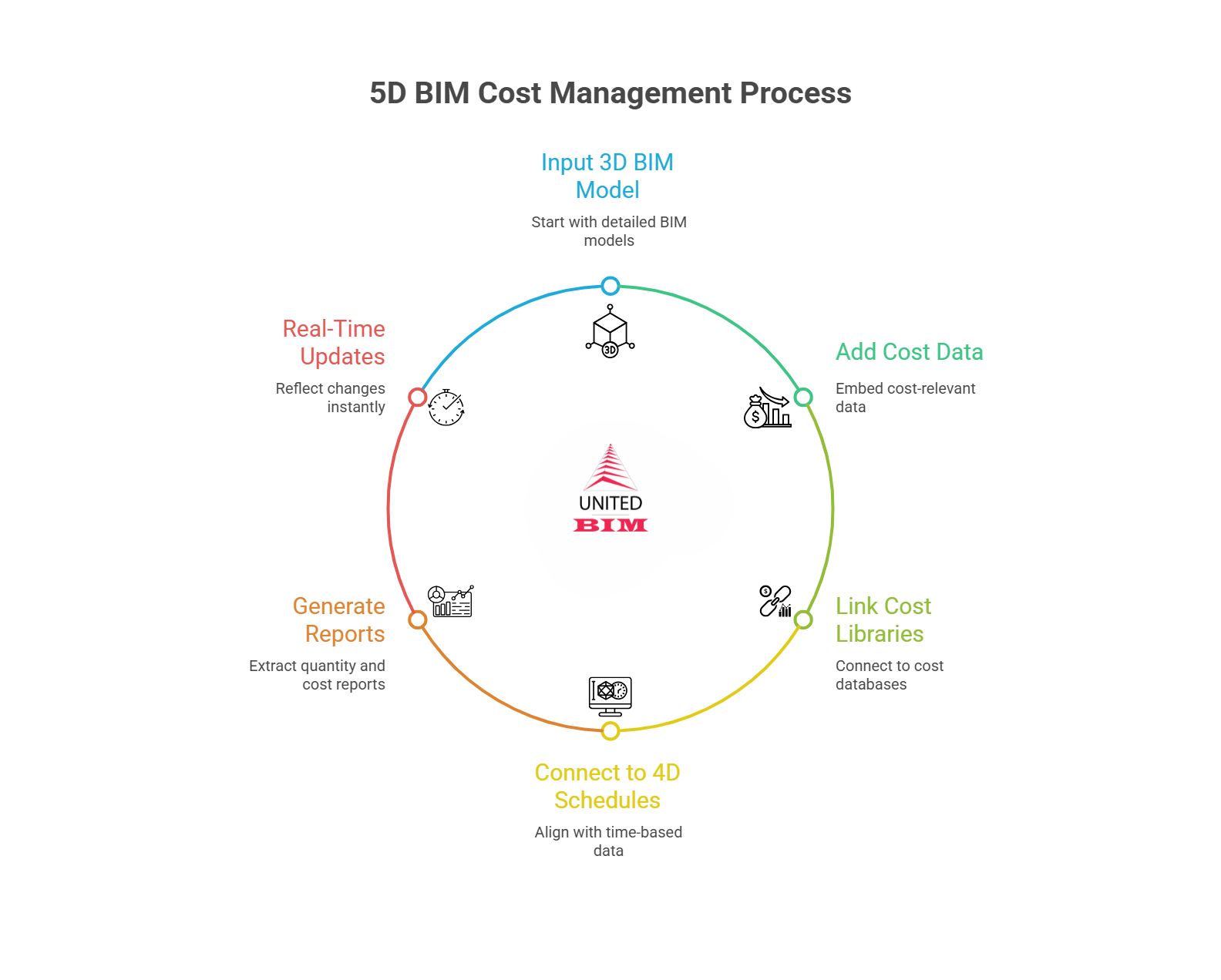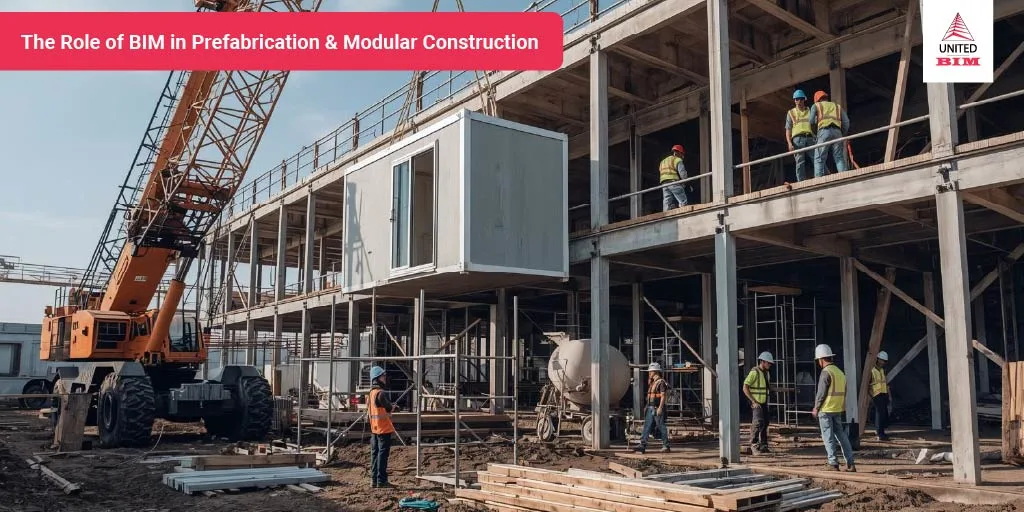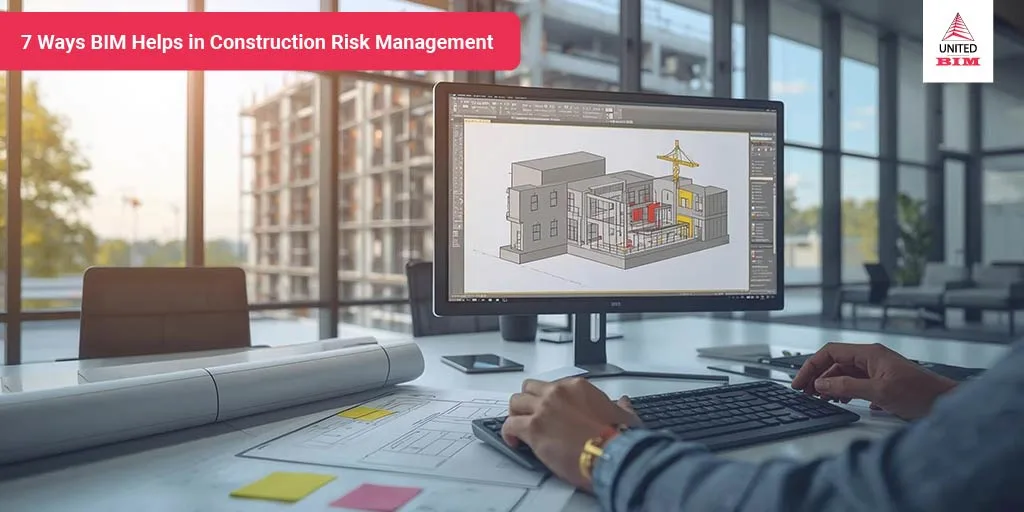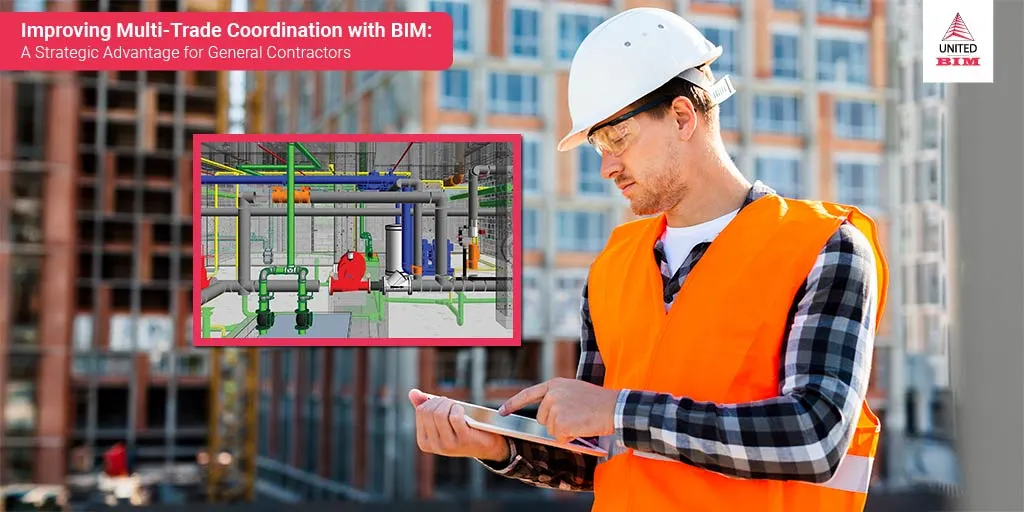Last updated on: October 17, 2025
Table of Contents
- What Is 5D BIM?
- When to Invest in 5D BIM for Budget and Cost Management?
- Benefits of Investing in 5D BIM at the Right Time
- Ready to bring accuracy and control to your large-scale project?
- When Not to Invest in 5D BIM
- Internal Readiness Checklist: Before You Commit to 5D BIM
- 5D BIM Services We Offer at United-BIM
- Still unsure about 5D BIM?
Cost control has been one of construction’s biggest challenges for a long time. With closer construction programs, fluctuating material rates, and higher design complexity, traditional methods of estimation tend to disappoint. Due to its potential to associate cost data with time and design, 5D BIM is, however, especially gaining industry interest.
Recently, Research and Markets predicted that 5D building information modeling’s global market size will be $2.6 billion by 2030, with a compound annual growth rate (CAGR) of 14.2% from 2024’s $1.2 billion market valuation. This rapid growth reflects both industry confidence and 5D BIM’s real value to cost estimation, project scheduling, and real-time decisions.
5D BIM adoption has been increasing rapidly across construction industry. It’s a proven method that closely integrates cost information with your project schedule and design.
If you are already experienced with 5D BIM but deciding whether or not it is time to incorporate it into your project workflow, then this guide will help with a confident, educated decision.
What Is 5D BIM?
5D BIM (Building Information Modeling) connects your construction documents + 3D model and construction schedule (4D) with real-time cost estimation and quantity take-offs. It allows all stakeholders to visualize not just what will be built and when, but how much it will cost at each stage.
At United-BIM, we specialize in 5D BIM cost estimation and quantity take-off services, providing project teams with accurate, real-time cost data connected to the design and schedule.
Want a deeper breakdown of BIM dimensions? Read our guide:
What are BIM Dimensions – 3D, 4D, 5D, 6D, and 7D BIM Explained
When to Invest in 5D BIM for Budget and Cost Management?
01.
Managing Large or Complex Projects
If your project involves multiple trades, large teams, and an aggressive schedule, traditional cost estimation methods can lead to errors, delays, and change orders. This is where 5D BIM modeling becomes essential. It ensures real-time quantity take-offs and cost tracking, reducing surprises later in the project lifecycle.
02.
Project Budget is Tight and Need to Eliminate Cost Overruns
In projects with narrow profit margins or strict funding, accurate cost forecasting and change management are non-negotiable. 5D BIM helps stakeholders adjust design decisions early based on cost feedback, avoiding scope creep and budget overshoots.
03.
Need Real-Time Collaboration and Data Integration
When you’re juggling between architects, contractors, estimators, and suppliers, siloed workflows cause delays. With a Common Data Environment (CDE), 5D BIM enables automatic updates. The moment a change is made to the design, cost and quantity data is adjusted automatically.
04.
Struggling with Manual Quantity Take-Offs
Manual BOQs Bill of Quantities and material take-offs are time-consuming and error prone. 5D BIM services automate this process, increasing estimator productivity and giving your procurement team a reliable BOM (Bill of Materials) to work with.
We recently covered this in detail in our blog 5D BIM Implementation – Barriers and Benefits. It’s a must-read for cost estimators and project managers evaluating modern tools.
05.
Preparing for a Competitive Bid
Contractors who present visually coordinated models along with dynamic cost data stand out. With 5D BIM, you can simulate cost changes, show procurement schedules, and support your bid with clarity that builds client confidence.
At United-BIM, we help general contractors generate BOQs, RFIs, and cost-linked visuals from a single 5D model. Our teams use tools like Revit and Navisworks to connect data across design and construction workflows.
Benefits of Investing in 5D BIM at the Right Time
If you invest early in 5D BIM during the design or preconstruction phase, you can unlock several benefits like:
Better decision-making
Due to design-cost alignment
For procurement and prefabrication
Between trades and cost estimators
Throughout the lifecycle
Between different contracts and project phases
These benefits are maximized when integrated from the early stages rather than late into construction.
We recently worked on a water treatment plant project that involved complex mechanical systems, multiple contractors, and tight regulatory timelines. The coordination of specialized equipment procurement, large volume concrete work, and phased construction demanded a precise cost-schedule balance.
Using 5D BIM, we:
- Created a cost model linked with project timelines
- Forecasted budget fluctuations for specialized materials
- Reduced cost estimation time by 40%
- Enabled proactive decisions by integrating real-time data
This level of control and foresight wouldn’t have been possible with traditional cost planning methods.
While 5D BIM is universally applicable, it's especially effective in:
These types of projects often involve complex systems, multiple vendors, and aggressive schedules—making cost-time optimization crucial.

5D BIM doesn’t just help project managers, it serves multiple departments across a project lifecycle:
Team/Department Benefit
- Logistics Accurate delivery schedules linked with material needs
- Procurement Forecasts purchasing timelines and bulk ordering costs
- Finance Real-time budget tracking and cash flow planning
- Estimators Automated quantity take-offs linked with current design
- Project Control Better cost-risk analysis and scenario simulations
By providing a single source of truth for material quantities, timelines, and associated costs, 5D BIM fosters seamless cross-functional collaboration.
When Not to Invest in 5D BIM
5D BIM can bring a lot of value, but that doesn’t mean it fits every project. Sometimes, using it too early or on small, straightforward jobs just doesn’t make sense. It can end up adding cost without much return. Here are a few situations where holding off on 5D BIM might be the smarter move:
01.
Early Conceptual Stage
If you are still sketching floorplans, estimating based on 5D BIM isn’t practical. You will spend money on modeling without solid cost data to anchor.
Better alternative: Use basic cost models or 2D conceptual estimating.
02.
Small, Low-Risk Projects
For interior renovations, small residential homes, or projects with fixed budgets and minimal design change, 5D BIM could be a burden.
Better alternative: Stick to traditional estimating or 3D BIM + QTO sheets.
Internal Readiness Checklist: Before You Commit to 5D BIM
Before moving forward with 5D BIM, take a moment to evaluate your internal project conditions. Ask yourself or your team these key questions to assess whether you’re truly ready to make the most of it.
✅ Do we have a coordinated 3D model ready (at least LOD 300)?
✅ Are we planning major design or scope changes?
✅ Is the project budget large enough to justify advanced estimating tools?
✅ Do stakeholders expect real-time cost feedback during design development?
✅ Is this a GMP or CMAR delivery model?
If you check most of these, you are likely ready.
5D BIM Services We Offer at United-BIM
Our 5D BIM solutions are designed for owners, contractors, and construction managers looking to integrate design, schedule, and cost.
Our key 5D BIM offerings include:
- Cost estimation tied to live models
- Quantity take-offs for all building elements
- Real-time cost adjustments with design changes
- Visual model integrated with material and labor costs
- Support for RFIs, bidding documents, and procurement lists
- We use a Common Data Environment to keep everyone on the same page and ensure
- that quantity and cost data stay in sync with every design update.
We use a Common Data Environment to keep everyone on the same page and ensure that quantity and cost data stay in sync with every design update.
If you’re facing cost uncertainty, design complexity, or outdated take-off workflows, now is the time to invest in 5D BIM. The earlier you integrate it, the greater the impact on budget accuracy and project efficiency.
Need help deciding? Let our BIM experts at United-BIM assess your current workflow and show you how 5D BIM can fit in.
Contact 5D BIM experts in the USA.
About the Author

Coordination Manager / VDC Manager at United BIM
With over 10 years of experience in the AEC industry, Akash Patel is a seasoned Coordination Manager and VDC Manager at United BIM. His expertise lies in managing complex MEP-FP coordination projects and leveraging cutting-edge BIM technology to ensure seamless collaboration and precision. Akash is dedicated to delivering high-quality, detailed models that meet the demands of modern construction. He is passionate about optimizing workflows and driving innovation within the BIM field.
